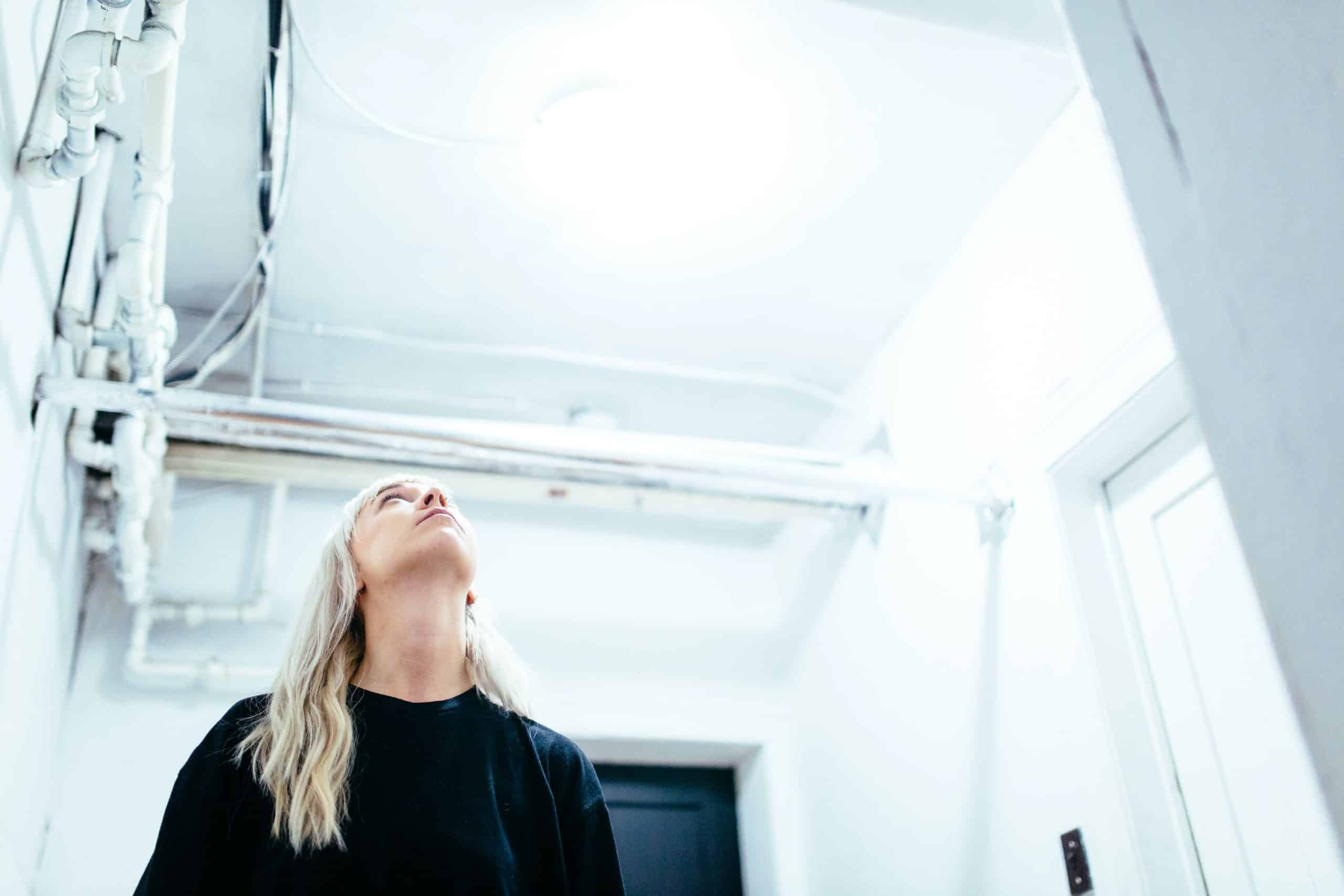How can you achieve an industrial look in a residential space?

In the realm of interior design, trends come and go, but one style that has remained constant is the industrial design. With its combination of raw materials, functional elements, and stripped-back aesthetics, the industrial style is both rugged and chic – a perfect blend for those seeking a modern yet rustic feel in their homes. From the living room to the kitchen, the industrial design can be incorporated in various ways to add character and depth to your space. In this guide, we will walk you through the essentials of creating an industrial decor scheme in a residential setting.
Embrace Exposed Elements
The industrial style celebrates the beauty of the unfinished and the art of the raw. The first step towards achieving this look is by exposing the structural and functional elements of your home that are usually hidden.
Cela peut vous intéresser : Smart home locks: enhancing security and convenience
In a typical industrial style space, exposed beams, brick walls, visible ductwork, and unfinished wood or concrete floors are common. These elements add a raw and gritty feel to the room that is characteristic of industrial design. Incorporating them into your space is as much about aesthetics as it is about paying homage to the building’s history and construction.
For instance, if there’s brickwork hidden behind your drywall, consider removing the cover to reveal the raw, imperfect bricks. If your home has wooden beams or metal pipes, leave them bare. This will give a distinct industrial feel to your home, highlighting its construction process and adding a sense of authenticity.
A lire en complément : What are the most effective natural cleaning solutions for your home?
Incorporate Industrial Materials
The use of industrial materials is a significant part of this design style. The most common materials used are wood, metal, and concrete. In an industrial design scheme, these elements are left in their raw and unfinished state to maintain authenticity.
Wood is a vital component of industrial design. It adds a touch of warmth and rustic charm to the otherwise cold and stark industrial elements. From wooden beams to furniture pieces, wood can be incorporated in various ways. Try opting for reclaimed or distressed wood to bring in a sense of history and character to your space.
Metal is another element that’s predominant in industrial design. It brings in the sleek, modern feel. From exposed pipes and ducts to metal furniture, there are countless ways to incorporate metal into your design.
Concrete, whether it’s your floor, walls, or countertops, adds a rugged aesthetic that’s typical in industrial design. It’s durable, easy to maintain, and brings in the raw, unfinished look that’s so characteristic of this style.
Focus on Functionality
In industrial design, functionality is as important as aesthetics. This design style emerged from warehouses and factories where efficiency and utility were key. This principle should translate into your residential space as well.
When selecting furniture, go for pieces that are stylish but also functional. Opt for clean lines and simple forms. In the kitchen, open shelving can be a great way to put your utensils and dishes on display, offering a practical and stylish solution.
Opt for a Neutral Palette
The industrial color palette is predominantly neutral – think various shades of grey, black, and white, combined with natural hues of wood and brick. The overall look is muted and understated, allowing the architectural elements and materials to shine.
You can introduce color through accent pieces, but remember to keep it minimal. A pop of color here and there can break the monotony and add interest to your space, but the focus should still be on the raw materials and the exposed elements.
Prioritize Industrial Lighting
The right lighting can make or break your industrial style decor. Industrial lighting is all about simple, functional pieces that are as much a style statement as they are a source of illumination.
Vintage factory-style pendant lights, metal task lamps, or even Edison bulbs can add to the industrial vibe. These lighting fixtures not only provide the necessary illumination but also serve as focal points in your room, contributing to the overall industrial look.
Mix It Up
While it’s important to adhere to the core principles of industrial design, don’t be afraid to mix it up a little. Adding elements from other design styles can create an eclectic, personalized space that reflects your taste.
For instance, modern furniture can create a striking contrast against a backdrop of raw, industrial elements. Similarly, adding soft furnishings and decor pieces can bring warmth and homeliness to the otherwise stark industrial space.
Remember, creating an industrial style decor is about striking a balance between the raw and the refined, the old and the new. It’s about showcasing the building’s structural elements while incorporating stylish, functional pieces that reflect your personal taste. So don’t limit yourself – be creative and have fun with it. You might be surprised at how versatile the industrial design can be!
Inject Industrial Accents
If you don’t want to go for a full-on industrial look, or if you’re working with a space that doesn’t readily lend itself to this design style, consider infusing your space with industrial accents to achieve a more subtle nod to the aesthetic. This approach allows you to maintain the general design style of your home while incorporating elements of industrial interior design.
Select furniture pieces that feature industrial materials such as metal, raw wood, or leather. Opt for a coffee table with a solid wood top and metal legs, a leather sofa with visible stitching, or dining chairs with a steel frame. These pieces lend a touch of industrial charm without overwhelming the rest of your decor.
Consider incorporating industrial-style lighting fixtures into your space. This could be a metal pendant light over your dining table, a vintage-inspired floor lamp in your living room, or Edison bulb sconces in your hallway. The right lighting fixtures can significantly contribute to the overall industrial feel of your home.
Lastly, decorative accessories can also help achieve an industrial look. Old gears, wire baskets, metal clocks, or vintage signage can add an element of industrial history to your space.
Remember, the goal is not to transform your home into a factory but to bring in elements of the industrial style that evoke a sense of history, character, and authenticity.
Creating an Outdoor Industrial Space
Why limit the industrial design to the interior of your home? Extend it to your outdoor spaces as well. This will create a cohesive look throughout your property and add an unexpected twist to your garden or patio.
Consider using raw materials like concrete, steel, or reclaimed wood for your outdoor furniture and structures. For instance, a picnic table made from distressed wood or a fire pit created from raw steel can help to create an industrial vibe in your outdoor space.
Similarly, exposed brick can be a great choice for an outdoor kitchen or a grill station. It’s not only durable and easy to maintain, but it also adds that raw, industrial look that’s synonymous with the style.
Lastly, use industrial-style lighting in your outdoor space. This could be anything from string lights with Edison bulbs to galvanized steel lanterns. Such lighting elements will not only illuminate your outdoor space but also add to the industrial aesthetic.
In conclusion, creating an industrial space, whether indoors or outdoors, requires a certain mindset. It’s about embracing the raw, the unfinished, and the functional. It’s about paying homage to the building’s history while adding modern elements that reflect your personal taste. With the right approach, the industrial design can lend a unique and characterful charm to your residential space. However, always remember to strike a balance between the industrial and the modern, the rugged and the refined. Too much of one can overpower the other, creating a space that feels more like a warehouse than a home. With the right mix, you can create a space that is as stylish as it is comfortable, as modern as it is rustic, and as individual as you are.
